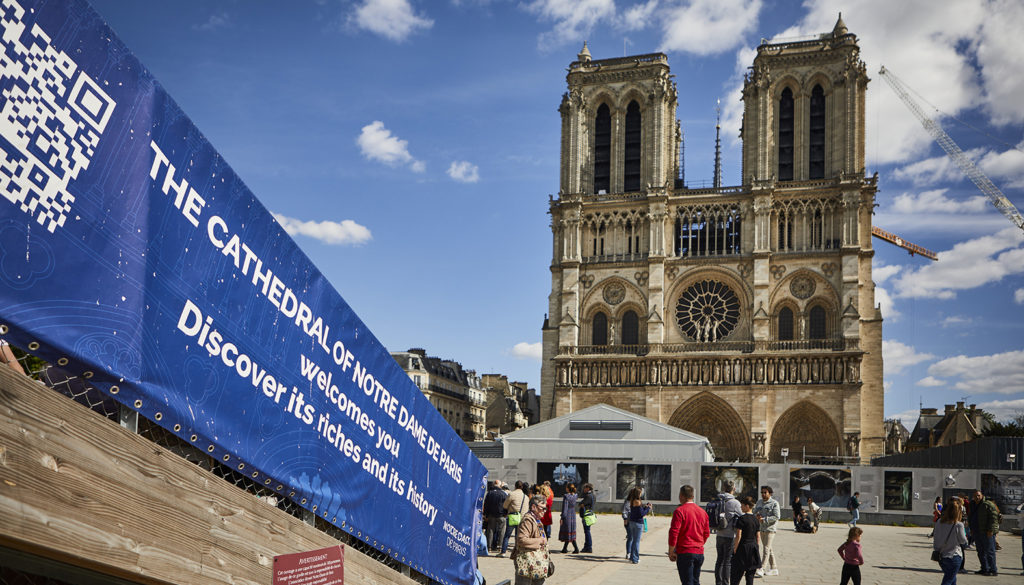In my previous life, when I was single and fancied myself a world traveler, the Cathedral of Notre Dame was one of the first items I ever crossed off my bucket list. It did not disappoint.
Having experienced it in person, climbing its stairs to share the view with a gargoyle or two, made what happened in Paris five years ago all the more terrible. Watching the 2019 inferno was devastating — seeing the iconic steeple topple, and then disappear amid the flames and smoke.
Even before the fire was out, speculation spread about what caused the blaze. I have to admit that I entertained a few conspiratorial premises, just based on the state of the world in which we live and the historical and religious importance of Notre Dame.
I was weirdly relieved to discover that the fire was not due to some clandestine international conspiracy, or religious terrorism. It was a banal electrical short circuit, capable of laying low a mainly stone structure that has stood for centuries.
But even as Notre Dame still smoldered days after, I wondered — or more precisely, feared — a secondary disaster would befall this once iconic and sacred space. My trepidation was fueled by news reports that the opening discussions on Notre Dame’s repair included suggestions that the cathedral would be “updated.”
Besides the obvious need for a modern fire detection and prevention mechanism, the powers that be were considering modern-day materials and design sensibilities that might alter Notre Dame’s architectural profile forever.
Nightmarish images filled my imagination of Notre Dame’s once grand medieval visage being rendered unrecognizable with glass, harsh right angles, and a watered-down religious profile taking its place. Would velvet banners with doe-eyed children gathered around a Jesus who looked like he just stepped off a Hallmark “holiday” card be in the offing?
After all, this isn’t your great-great-great grandfather’s France. She can no longer claim the title she once held as “Daughter of the Church,” when only 8% of its citizens attend Mass weekly. Today France, like a lot of other places, seems closer to the 18th-century Enlightenment that gave birth to the excesses of the French Revolution and turned houses of worship into temples of “reason.”
The good news is I am pretty good at being wrong, and it appears my fears were mistaken. The French government vowed to rebuild this magnificent edifice in five years. Nearly $1 billion in donations poured in from around the world. Even though, technically speaking, this month marks the fifth anniversary, that they are on schedule to reopen Notre Dame’s doors to the general public by the end of 2024, despite a global pandemic in the middle of renovations, is miraculous.
Among other miracles, when those doors open again, what people are going to see is pretty much what medieval worshippers saw. Concepts to “improve” and “update” the space lost out to cooler heads, and Notre Dame is being repaired to its original state.
To accomplish such a monumental feat, artisans from around the world were brought in. Many of them have relied on modern technology, like computer imaging, to assist them with their work, but the technology was there to serve the needs of modern building technique stability while maintaining not-so-modern aesthetics. This included using the same materials the original builders utilized when the structure first took form overlooking the Seine. Where possible, the 21st-century builders even used medieval tools like axes and chisels. This result is both an homage to the craftsmanship of the past and a sign of respect for the beauty that was and will continue to be Notre Dame.
This month, the spire so many of us watched keel over and plummet into an inferno has now been affixed to its rightful place and lords over the gargoyles. Just as geography can be destiny, so too is architecture, and to lose something as splendid as Notre Dame not just to fire but to the whims of those who feel a need to “improve” it would have been a double disaster. No one ever suggests the Gettysburg Address could have been longer, or that the Mona Lisa would have been a stronger painting if there was a pony in the background.
I guess I’m just a sucker for spires and statues, niches, and ornamentation chiseled out of stone by artistic hands. Now, as I enter another phase of life, where I may not be as spry to run up the steps of Notre Dame like I once did, I can certainly see reviewing my travel to-dos and putting a renewed and reborn Notre Dame back on the bucket list.

